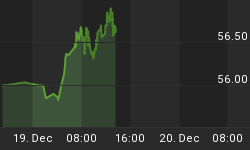On Tuesday, the Federal Reserve released the minutes from the December 13 FOMC meeting. Last month, the Fed removed the reference to policy being "accommodative," which signaled that further increases would be limited. The minutes confirmed this assessment. The committee said that "future action would depend on the incoming data" and added "given the information now in hand, the number of additional firming steps required probably would not be large.'
The problem with this assessment of the economy is that the economy is not balanced. While growth in several areas of the economy has moderated recently, it is likely that the drop in interest rates will boost economic activity. This has happened a few times over the past two years, with housing being the driving force. Residential real estate is still the wild card. If mortgage rates drop again, or lenders continue to find creative ways to finance homebuyers, economic growth will likely reaccelerate.
Retail sales weakened the week after Christmas according to the ICSC. Year-over-year retail sales growth dropped to 2.9% from 3.9% the following two weeks. This was the slowest increase since October 11, 2005. Wal-Mart said that its December sales increased 2.2%. This was at the lower end of company guidance and the smallest gain for December sales in five years. Analysts commented that since November sales at Wal-Mart were strong, the early promotions pull sales forward from December. This seems too much like wishful thinking. Retailers report December sales results on Thursday. Analysts are expecting December retail sales to increase by 3.6%. Teen apparel retailers are expected to be the leaders with 7.2%. Even with sales at teen retailers expected to be the strongest group, total apparel sales are expected to increase only 1.8%.
A few retailers have already reported December sales. Aeropostale reported that December same store sales increased 11.7%, more than double the estimate of a 5.5% increase analysts expected. Not only were sales stronger than expected, but the company said that gross margins were better as well. Because of the strength of the holiday season, the teen apparel retailer also said that earnings would be $0.71 - $0.73 per share. This is significantly higher than the $0.55 - $0.61 previously articulated. American Eagle also exceeded analysts' estimates for December sales. Same store sales increased 9.8%, the average estimate was 3.5%. The company maintained it earnings guidance for the fourth quarter.
Results at Hot Topic and Walgreen reported December results that were less than Wall Street expected. Same store sales at Hot Topic dropped 6.2%, larger than the 4.1% decline projected. Additionally, the retailer said that earnings would be up to a dime lower than the $0.31 per share estimate. Walgreen said that same store sales increased 6.2% in December, lower than the 7.7% estimate. Analysts thought it might be due to a late flu season and sales will likely pick up.
Automaker reported December sales on Wednesday. In aggregate, sales were a healthy 17.2 million units. This was the best month since July and followed two consecutive months of sales below 16 million units. Market share for the domestic automakers dropped to 57% in 2005, down from 58.7% in 2004. To nobody's surprise, US market share was lost to the Asian nameplates. Asian automakers increased share by over two percentage points to 36.5%, led by Toyota which increased share by over one percentage point. Market share for the domestic automakers fell throughout the year, dropping to 55.2% in December, down from 58.2% last December. Europeans also lost market share during 2005, dropping from 6.8% to 6.5%.
The latest, "Reality Check" column from Market News International reported that staffing executives are optimistic about business in 2006. Alan Guarino, CEO of Cornell International, said his business was up 15% in December and plans to hire additional staff himself this year. Deborah DeCamp, Manpower's Midwest regional director, said growth in 2005 was 6%-7% and each month was better than the previous month. She expects business to be up 10% in 2006. Manpower expects permanent placements to accelerate. DeCamp increased her permanent placement staff by 40% during 2005. The Labor Department releases the December employment report on Friday. With the Fed being focused on the data, so will the markets.
Earnings estimates have dropped slightly since the beginning of December. Analysts now expect earnings for the S&P 500 to increase 13.0%, down from 13.5% last month. This is substantially lower than when the fourth quarter started. On October 1, earnings were expected to increase 16.6%. This would be the first time since the second quarter of 2002 that earnings didn't exceed the estimates at the beginning of the quarter. It is also worth noting that the last time the trend switched from beating initial estimates to missing was the third quarter of 2000.
Margins have improved over the past couple years as companies reduced costs. These lower costs were further leveraged by a strong rebound in economic growth. Most cost cutting measures have already been done so it will be difficult to squeeze anymore margin improvement from cost cutting. Additionally, companies were able to recapitalize their balance sheets at much lower interest rates, which also boosted margins. Without margin improvement, earnings growth will more closely align with revenue growth. During 2004, earnings outpaced revenue by an average of ten percentage points each quarter. During the first three quarters of 2005, this has dropped to only about three percentage points. Earnings expectations are high for 2006 with analysts expected 13% earnings growth. This will likely prove too high if the economy slows and if the economy does not slow, investors will have to face higher interest rates.















